I had only the vaguest idea of what the shoot would be about. I envisioned a creepy man carrying a sack through the forest, whose contents he eventually buries with violent digging and a lot of over-the-shoulder looks. The ending is a bit of a surprise, and certainly reveals who in the audience has a pronounced dark side to their personality. At my disposal I had a Canon C500, a Convergence Design Gemini 444 raw recorder, Adam’s Vinten tripod, three Canon prime lenses (a 24mm, 50mm and 85mm), some props and a white flex fill. I also rented a small slider from Shooting Star Video in Foster City. My goal was to shoot fast and without a lot of fussing, focusing on composition above all else. My first love is composition, and while I’m very good at lighting I really enjoy finding interesting ways to compose images and move the camera. As I was both the DP, producer and co-director I had some sense that I would be able to set up the shots that I wanted, without compromise, as quickly as I could move the camera.
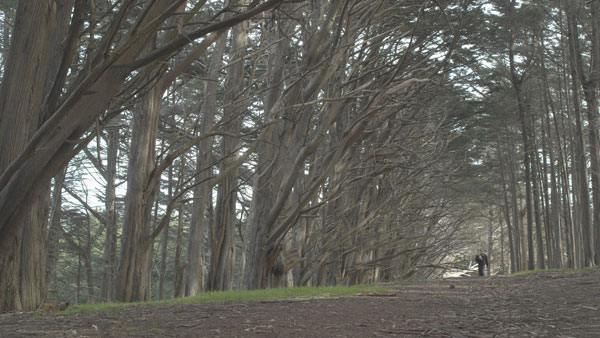
The first shot, processed from Canon raw using Canon’s Cinema Raw Development app.
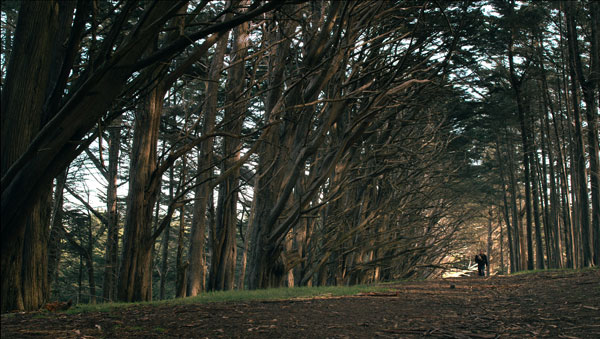
What it became in the masterful hands of colorist Chris Martin, at Spy in San Francisco.
The first shot is the most painterly. It looks down the cypress grove at an individual walking up a path as the camera slowly slides left to right. I opted for a low angle for two reasons:
- moving the camera with a wide lens requires something in the foreground to show that movement is actually occurring, so in this case I used the textured ground as a slowly moving compositional element; and
- I had no way to rig the slider in the air anyway.
I’d seen this shot in my head during the scout and it was the one setup I really wanted to get: our mysterious man is a speck in the distance, dark clothing standing out against a sunlit fallen tree in the distant background, and framed by dozens of overhanging branches. The contrast of dark against light leads the eye directly to the man, but then my eye moves along the ground to the tree trunks at the left of frame, moves up the tree trunks to the branches, across the branches at the top of the frame and back to the man. Although there’s a tremendous amount of texture in the frame the eye has a path to follow, which means the audience will scan the frame and see everything they’re meant to see before the edit. The frame is bounded by trees on the left, trees on the right, branches overhead and ground in the foreground, and the depth of the scene is well defined by the forest floor in the foreground and the sunlit tree in the background.
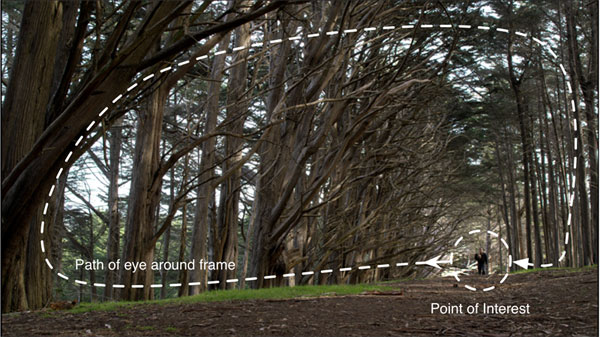
It’s a painting, pure and simple.
I was a little less thorough with my other shots but I found myself falling back on my old influences, which are–believe it or not–British television from the 70s and 80s. In particular, a series entitled “The Prisoner“ convinced me that some day I wanted to look through a viewfinder so that I too could craft amazing compositions and move a camera in interesting ways.
Most often shots in “The Prisoner” employed wide angle lenses and were composed in depth, such that there was almost always something in the foreground to add a sense of perspective. The frames were dynamic, filled with interesting shapes, and the blocking took advantage of the space available in the sets. Actors were always moving toward the camera or away from it, focus was regularly racked from one person to another, and the coverage was rarely traditional: one shot carried the story to a specific point and then another shot picked up the action and continued it forward. There was a certain amount of over-the-shoulder coverage but there was a lot less than there was on U.S. TV at the time.
Another trick I loved was starting a scene or shot on a tight frame, or on a frame that avoided the action, and then gradually revealed the action. This is a great way to build suspense and keep the audience engaged.
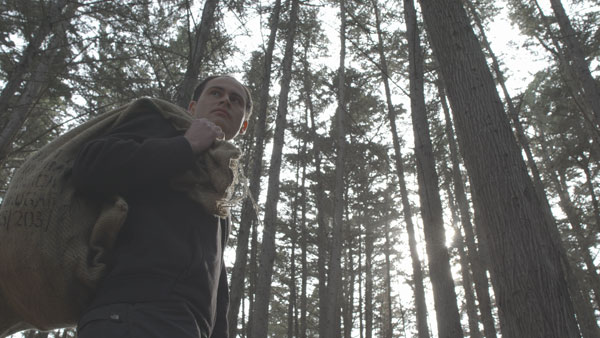
Before the grade…
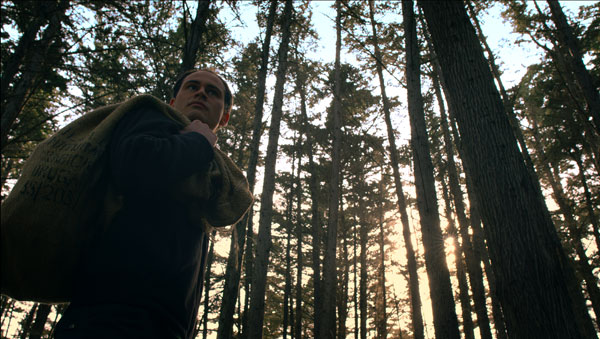
…and after.
I primarily used the 24mm lens, keeping the shots wide and close to the action where possible. I think I only used the slider on three shots but those three shots look great. One move was at a 45-degree angle, pushing in and across at the same time. One reason for this is practical: a straight push-in would have revealed the end of the slider. Artistically, though, it was really interesting to both push in and move to the right while following a distant figure that was moving in the same direction. The frame both brings us closer and links us to him through unified movement. It’s a really interesting effect.
The third slider shot was the big reveal, but you’ll have to wait a bit to see that.
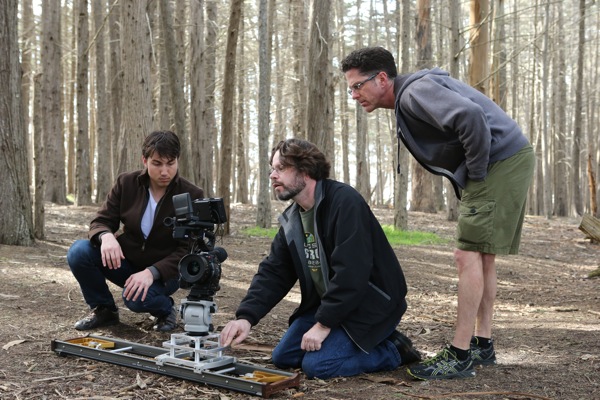
The setup for the first shot, seen above. Left to right: camera assistant Ted Allen, me, Devin Baker. Slider courtesy of Shooting Star Video.
We recorded Canon raw to a Convergent Design Gemini 444 recorder. It’s a no-frills device with some hard edges and no on-off switch (you simply plug it in or unplug it) but once Adam set it up for me I never worried about it again. The same was true of the camera: once I put it in Cinema mode, which basically imposes a log curve on the footage and encodes it into a broad gamut color space while disabling nearly every other control, I never worried about the settings again. I used daylight white balance preset and turned on viewing assist, which decodes the log signal in the LCD finder so I could see a “normal” image, and beyond that I only worried about focus, aperture and the start-stop button. We shot as fast as we could move the camera, which was pretty liberating.
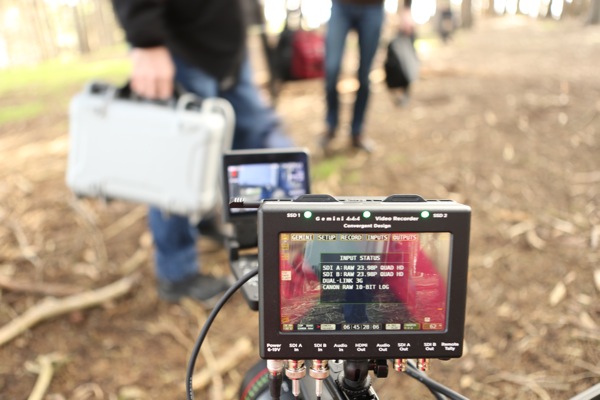
The Convergent Design Gemini 4:4:4 recorder, mounted on the C500’s handle.
